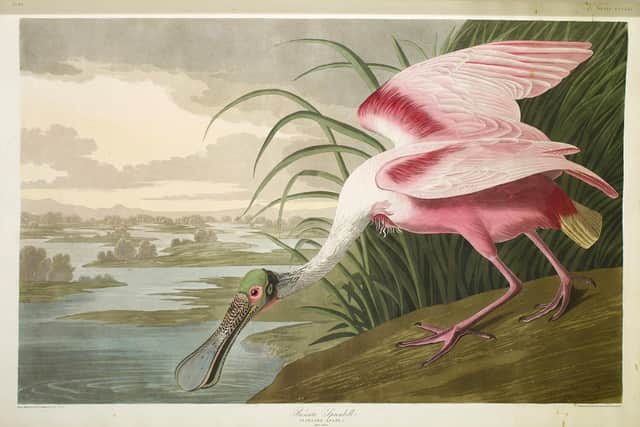Audubon's beautiful birds go on show, but his darker backstory won't go unseen - Alison Campsie
Naturalist, ornithologist and artist John James Audubon has long been famed for his breath-taking depictions of bird species he recorded on his extensive travels and which illustrated his seminal book, Birds of America.
Audubon’s Birds of America, which opens on February 12, will showcase 46 unbound prints from the NMS collection, most of which have never been on display before, as well as a rare bound volume of the book.


Advertisement
Hide AdAdvertisement
Hide AdTurn the pages and you’ll see owls bursting into flight, songbirds peering out of trees, and eagles feasting on their prey. Such are their appeal John Lewis does a line in Audubon prints and, while the images would illuminate any room, they could also be a bit of a talker given aspects of his past that are now being given greater attention.
The exhibition comes as debate surrounding the legacy of Audubon shifts and museums work to decolonise their collections and exhibitions. Long considered an all-adventuring American icon, his history of owning enslaved people and stealing skulls from graves around the world to advance theories of race and biology has risen to the top over the past couple of years.
The Audubon Naturalist Society (ANS) announced in October it would change its name due to the “pain” he caused in the past. Meanwhile, Aberdeen University revealed in November it’s looking to repatriate nine skulls held in its museum collection that were stolen by Audubon.
The skulls ended up in Aberdeen due to his friendship with William McGillivray, a professor of natural history at Marischal College, who edited the text for Birds of America after they met in Edinburgh.
Audubon visited Edinburgh several times in the late 1820s and made a number of connections. Dr Robert Knox, of Burke and Hare infamy, writer Sir Walter Scott, and phrenologist George Combe were among them.
These connections will be documented by NMS, as will Audubon’s past as a slaver. An interview with the Audubon Naturalist Society will also feature. These shouldn’t detract from the birds he brought so magically to life, but behind their beauty lies a backstory which now cannot go unseen.
A message from the Editor:Thank you for reading this article. We're more reliant on your support than ever as the shift in consumer habits brought about by Coronavirus impacts our advertisers.
If you haven't already, please consider supporting our trusted, fact-checked journalism by taking out a digital subscription.
Comments
Want to join the conversation? Please or to comment on this article.
